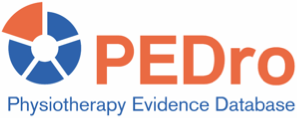Shoulder pain is a common musculoskeletal complaint, of which rotator cuff related pain is the predominant diagnosis. Clinical guidelines recommend exercise for rotator cuff related pain but make no distinction about the type of exercise prescribed. This review aimed to estimate the average effect of resisted and progressive exercise and non-resisted or non-progressive exercise, both compared to no treatment or placebo.
Sensitive searches were performed in five databases (Cochrane CENTRAL, Medline, Embase, CINAHL, OpenGray) and two clinical trial registries (ClinicalTrials.gov, who.int/ictrp). Randomised controlled trials of exercise compared to no treatment or placebo in participants over 16 years of age with a primary complaint of rotator cuff related pain of any duration were included. Exercise was classified as resisted and progressive (ie, explicitly stated how resistance was applied and that there was progression of the volume or the load, or both, over time) or non-resisted or non-progressive (ie, explicitly stated that load was not applied or not progressed, or both). The primary outcome was a composite measure of pain and function measured on any shoulder-specific scale (converted to a 0-100 scale, with 0 being no pain or dysfunction). Secondary outcomes were pain (overall, with activity, and pain at rest; all converted to a 0-100 scale, with 0 being no pain) and the number of participants experiencing an adverse event. Medium-term (6 weeks to 6 months) follow-up was used as the primary timepoint. Two reviewers independently identified trials for inclusion and extracted data, with discrepancies resolved through discussion or by arbitration from a third reviewer. The Cochrane risk of bias tool was used to evaluate trial quality, with all quality ratings extracted from a recent Cochrane review (Page et al, 2016). Confidence in the evidence was conducted using the Grading of Recommendations Assessment, Development and Evaluation (GRADE) approach. Random effects meta-analysis was used to calculate the mean difference and 95% confidence interval (CI) for the composite measure of pain and function and the pain-related secondary outcomes, and the relative risk and 95% CI for adverse events.
Seven trials (468 participants) were included in the analyses: 4 trials (271 participants) evaluated resisted and progressive exercise and 3 trials (197 participants) evaluated non-resisted or non-progressive exercise. The mean age of participants was between 47 and 61 years old and trials largely included males. Baseline composite pain and function was comparable (33 to 50 out of 100).
Compared to no treatment or placebo, resisted and progressive exercise reduces composite pain and dysfunction by a mean of 15 points (95% CI 9 to 21, 4 trials, 271 participants), overall pain by 11 points (95% CI 6 to 16, 3 trials, 197 participants), pain with activity by 25 points (95% CI 14 to 36, 2 trials, 135 participants), and pain at rest by 23 points (95% CI 14 to 32, 2 trials, 135 participants). All results were classified as low certainty. The effect on adverse events is unclear as no trials reported whether any adverse events occurred.
No effect was observed for non-resisted or non-progressive exercise. Compared to no treatment or placebo, non-resisted or non-progressive exercise reduced composite pain and dysfunction by a mean of 4 points (95% CI -2 to 9, 3 trials, 197 participants), overall pain by 3 points (95% CI -1 to 8, 3 trials, 197 participants), pain with activity by 3 points (95% CI -5 to 12, 3 trials, 197 participants), and pain at rest by 2 points (95% CI -7 to 10, 2 trials, 174 participants). Adverse events (short term increase in pain) may be higher with non-resisted or non-progressive exercise compared with placebo (risk ratio 3.77, 95% CI 1.49 to 9.54, 1 trial, 116 participants). Again, all results were classified as low certainty.
Resisted and progressive exercise provides an uncertain clinically meaningful improvement in pain and function compared to no treatment or placebo among people with rotator cuff related pain. In contrast, there is low certainty evidence of no benefit in all outcomes with non-resisted or non-progressive exercise.
Naunton J, et al. Effectiveness of progressive and resisted and non-progressive or non-resisted exercise in rotator cuff related shoulder pain: a systematic review and meta-analysis of randomized controlled trials. Clin Rehabil 2020 Jun 22:Epub ahead of print.
Articles cited in this post:
Page MJ, et al. Manual therapy and exercise for rotator cuff disease. Cochrane Database Syst Rev 2016;Issue 6



